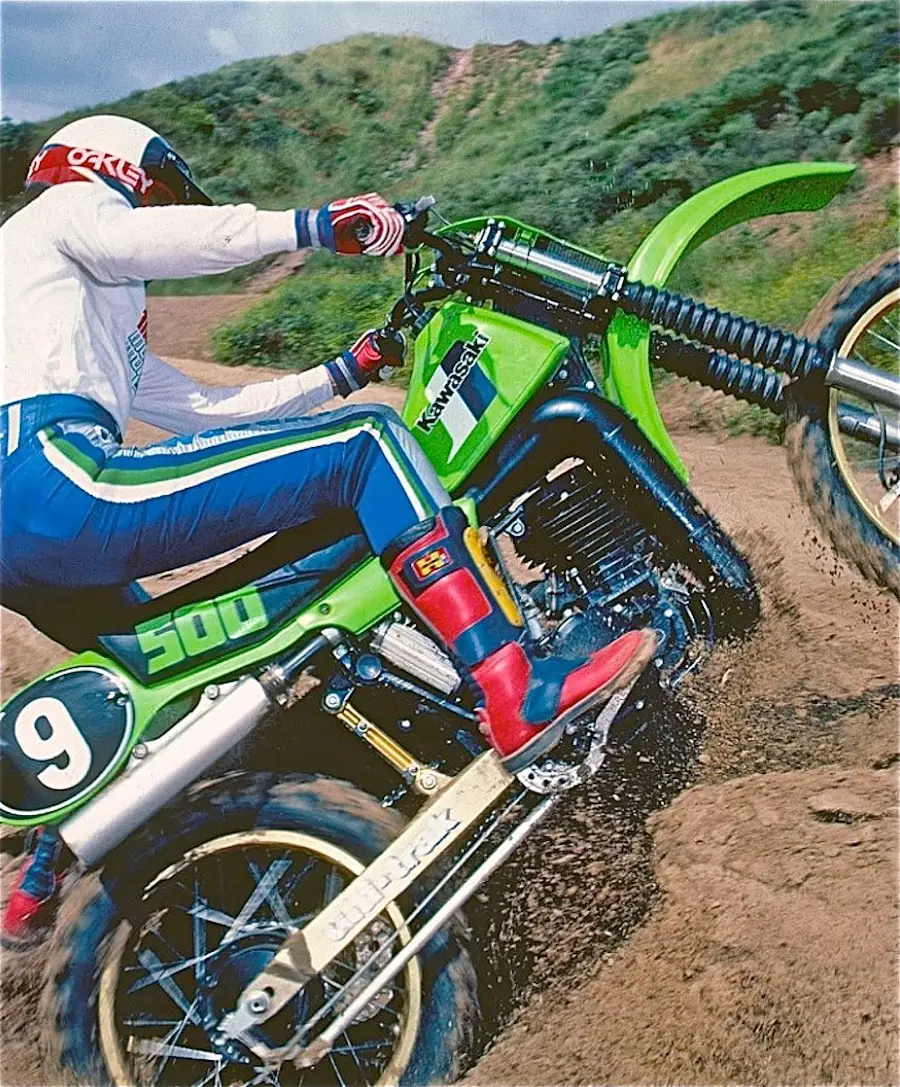FORGOTTEN MOTOCROSS TECH: REAR NUMBER-PLATE FENDERS

Four-time 250 National Champion Gary Jones on MXA’s 1983 Kawasaki KX500 with the stock rear number-plate fender.
Motocross history is filled with examples of creative ideas that were heralded as groundbreaking, but, because of the rapid rate of change in development, sank into the swamp of forgotten technology. Although some ideas are best left abandoned, others were truly innovative (if not ultimately successful). MXA loves to reveal motocross’ tech trivia. Do you remember this idea? Rear number-plate fenders.
 In 1965 Bert Greeves introduced number plate rear fenders on the Greeves 250 Challenger.
In 1965 Bert Greeves introduced number plate rear fenders on the Greeves 250 Challenger.
In 1979, the FIM passed a rule stating that rear number plates had to be moved rearwards so that the riders’ legs would not cover up the numbers. The simple solution was to mount oval front number plates back by the rear fender, as Husqvarna had been doing for years.
Husqvarna had been running front number plates bolted to the frame since the early 1960s. This 1969 400 Cross is a classic example.
The AMA didn’t follow suit immediately, but the aftermarket responded immediately and began selling elongated side panels for most brands of bikes—although they were often flimsy because the only structure at the back of the bike to support these longer side panels was the seat bolt. For the 1979 season, Yamaha, Kawasaki, Suzuki, Maico and Bultaco came stock with rearward number plates, while Husqvarna kept its oval front number plates on the rear. The only 1979 holdout was Honda, who didn’t comply with the new rules until the 1981 model.
 Kawasaki was the only Japanese brand to embrace rear number plate fenders in production, although some late 1960s works bikes, like this 1966 Suzuki RA125 had them.
Kawasaki was the only Japanese brand to embrace rear number plate fenders in production, although some late 1960s works bikes, like this 1966 Suzuki RA125 had them.
Perhaps the oddest bikes to come from this rule change were the 1982 and 1983 Kawasaki KX125s, KX250s and KX500s, which went back 15 years in motocross history to copy the molded fiberglass rear number-plate fender from the 1965 Greeves 250 Challenger.







Comments are closed.